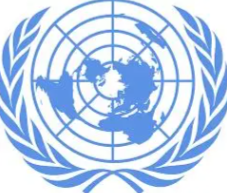What Is the UN Digital Refugee Project?
The UN Digital Refugee Project was created to raise awareness by developing digital personas that simulate the lives of displaced people. These Digital Refugee characters share their journeys online, aiming to bridge the empathy gap and bring global attention to refugee issues. However, the use of fictional personas, rather than real-life stories, has triggered an intense ethics debate over accuracy, transparency, and representation.
Why Has the Project Sparked Backlash?
The controversy centres around several core concerns:
Authenticity: Critics argue that fictional personas risk misleading the public and diluting the impact of genuine refugee voices.
Transparency: There are worries that audiences may not always realise these stories are fictional, which could undermine trust in humanitarian messaging.
Representation: Many believe that digital avatars may overshadow actual refugees, reducing complex realities to simplified digital narratives.
The debate highlights the challenge of balancing innovation with ethical responsibility in digital storytelling.

Step-by-Step: How the Digital Refugee Project Operates
Persona Creation: Teams design digital profiles based on real refugee data and interviews, building composite characters that reflect diverse backgrounds.
Story Development: Writers script daily updates and experiences, blending factual scenarios with creative storytelling to engage audiences.
Platform Integration: These personas interact on social media, posting updates, photos, and videos as if they were real individuals.
Audience Engagement: Followers can comment, share, and participate in campaigns, boosting empathy and driving support for real-world causes.
Transparency Measures: Disclaimers are ideally included, but critics say they are often not prominent enough, fuelling the ethics debate.
Ethical Implications and the Ongoing Debate
The UN Digital Refugee Project Ethics Debate raises important questions about digital representation, consent, and advocacy. Supporters claim the project humanises statistics and fosters empathy, while critics warn it may lead to “empathy fatigue” and ethical grey areas. As digital advocacy evolves, the need for clear boundaries and respect for real stories becomes more urgent.
Conclusion: The Future of Digital Refugee Storytelling
The backlash against the UN Digital Refugee Project is a crucial reminder that technology must be used with care and integrity. Transparency, authenticity, and respect for real voices are key to effective advocacy. As the ethics debate continues, the future of digital refugee storytelling will depend on finding the right balance between innovative engagement and genuine representation. ????


